First of all…let me apologize for being so bad about posting updates! Internet is one of many conveniences I took for granted before studying abroad. No worries though. I am at an internet cafe and plan to get you caught up on my exciting experiences in India!
Let me introduce you to Lord Ganesha (also known as Ganapati, Varad, and Ganesh). Ganapati (as he is most often called in the state of Maharashtra, where I am living) is the Hindu God of Success, Knowledge and Wisdom and is celebrated for a duration of 10 days in many homes and temples throughout India. He bears the body of a round-bellied human and the head of an elephant, a physique he gained from the following story:
A boy was charged with the task of guarding the goddess Parvati as she bathed. When her husband, Shiva, returned home he was angry to find the boy blocking his way and, enraged, cut off the boy’s head. When Parvati learned what Shiva had done, she was distraught. In an attempt to atone for his actions, Shiva sent his troops to cut off the head of the first being they saw. A sleeping elephant was first encountered by the troops and his head was brought back to Shiva and attached to the body of the boy. Shiva brought the boy back to life and made him the leader of his troops, bestowed with the name “Ganapati”.
Ganapati Festival is an extremely exciting, intense, and jubilant time. In the days approaching the first day of the Ganapati Festival, huge mandals (covered stages or platforms) were assembled and decorated lavishly to prepare for the installation of their Ganapati idols. Throughout Pune, there is a competition for the most beautifully decorated mandal and Pune-ites don’t take this competition lightly, erecting 30-foot tall mandals bejeweled with thousands of twinkling lights, bouquets of hundreds of fresh flowers, and booming with music projected from speakers taller than me.
In the days preceding Ganapati Festival, you can find hundreds of storefronts like the one pictured below featuring rows and rows of Ganapatis. Ranging from less than a foot tall to six feet tall (or thirty feet tall in bigger cities like Bombay!), Ganapati idols are selected by families far in advance of the festival and are placed on display before they are collected by eager families on the first day of the festival. According to tradition, once you have kept a Ganapati idol in your house one year, you must keep one in the following years of at least the same size for all coming years.
The day before Ganapati Festival began, I went with my host aunt, Ma Pai, to deliver vases to her daughter-in-law for use in her Ganapati preparations. As we got to the heart of Pune, our car crawled slowly to a stop in thick traffic as thousands of families made their way through the city and between motionless cars to pick up their Ganapati idols and welcome him into their homes. From the distance we could hear the sounds of drumming troupes practicing their routines for the final day of Ganapati, when they would play throughout the entire night to celebrate the end of the festival and thank Ganapati for the time spent in their homes. Later that evening on my way home, my host sister and brother took us to one of the drum troupes’ practices and we were given the opportunity to practice holding one of the drums. They were surprisingly heavy! Those who bear the weight throughout the entire night think not of the weight of the drum, but of the satisfaction that comes with honoring and celebrating Lord Ganapati.
On the first day of Ganapati, I attended a pooja (prayer or worship ceremony) at my host mom Aai’s sister’s house. My host great-aunt (Ambu Mowshi) is all of 4’8” in stature but possesses extreme endurance, grace, and coordination when it comes to organizing poojas. Her two-bedroom flat was full of family members, food, sweets, incense, offerings, and aartis (songs, similar to hymns) from 5am to 10pm as she brought together her entire extended family to worship Ganapati. I was lucky enough to participate in the poojas at her household and even got to play one of the percussion instruments during the aartis (a task many children fight over because noisemakers are so fun, duh!). At each pooja, family members gather around Ganapati to sing aartis, clap their hands, sound their percussion instruments, and offer words of praise and worship. One male family member leads the pooja and wears a traditional thread of the Brahmans (the highest of the castes in Hinduism) as he rotates a plate of fire and incense in front of Ganapati throughout the aartis. At the end of the aartis, the plate of fire is presented to each person, and we cupped our hands around the flame then slid our hands from our foreheads, over our hair, and down to our shoulders. Then we each took a handful of flowers to the Ganapati idol, place them on his body, and whispered “Namaste” as we bowed respectfully. Poojas were then ended (as all good things end in India) with a plate full of food, handfuls of modak (sweet dumplings), and time with family.
Ganapati can stay in a house for a duration of one and a half days, five days, or the full ten days, but my family decided to only keep Ganapati for one and a half days. When it was time for him to leave, his departure was celebrated by another pooja and then immersion- the final stage of the Ganapati Festival. Our family crammed into cars during the middle of a monsoon-like downpour and drove to a designated immersion tank. (In the past, Ganapatis had been immersed in natural water sources but due to the environmental degradation this causes, tanks are now set up throughout the city to be used for immersion). While a multi-colored umbrella was held carefully over Ganapati to protect him from the rain, a coconut was broken in half and its contents poured over his head. A final aarti was sung and “Ganapati bapaa, moryaaa!” chanted heartily several times before he was carefully immersed in the water of the tank. The immersion of Ganapati, according to my host sister, represents a returning to nature until he comes again. Ganapati bapa, morya!

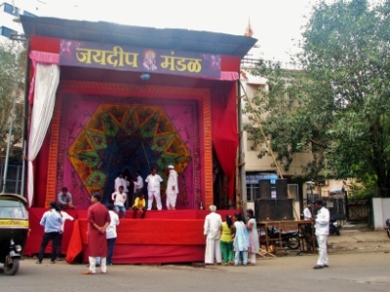
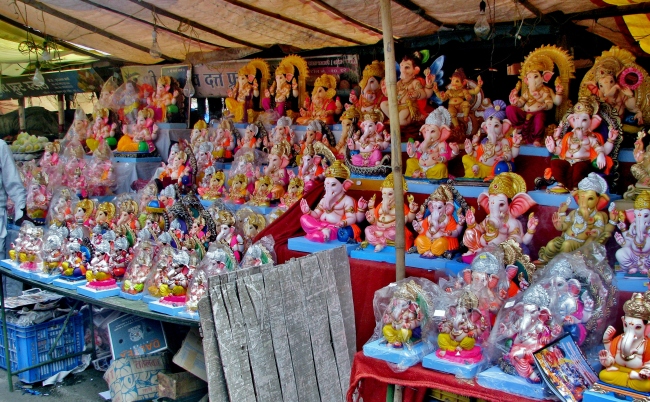
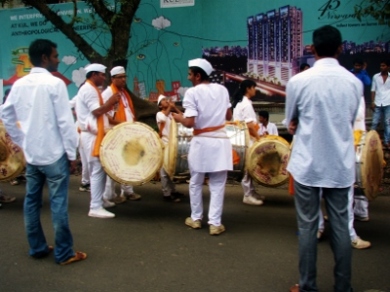
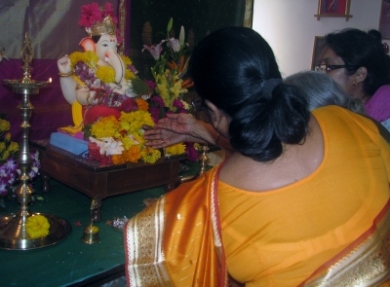
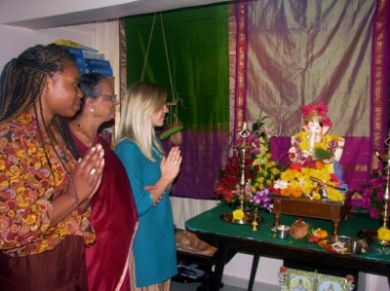
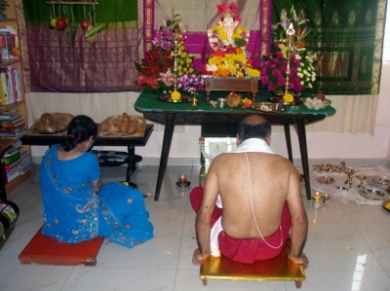

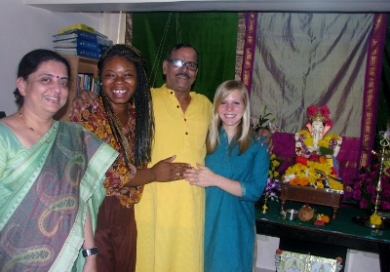

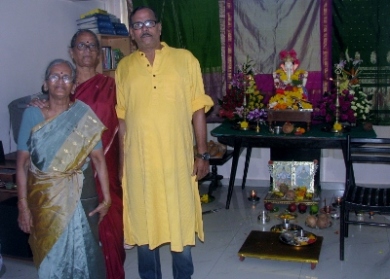
Lilianna
Love reading your posts and your insights. Having grown up as a farm child in ND, I find how far behind India is in agriculture quite amazing. The contrast is significant between farmers in India learning how to soil test to farmers in ND who farm 10,000 acres using the largest equipment money can buy which is run by a GPS system mapping out the coordinates of the field and providing you with constant computerized readings on the yield being harvested from genetically modified seeds. We have too much grain to feed our people and in India children starve. (actually they do here as well).
Keep writing and learning – we miss you!
Cheryl